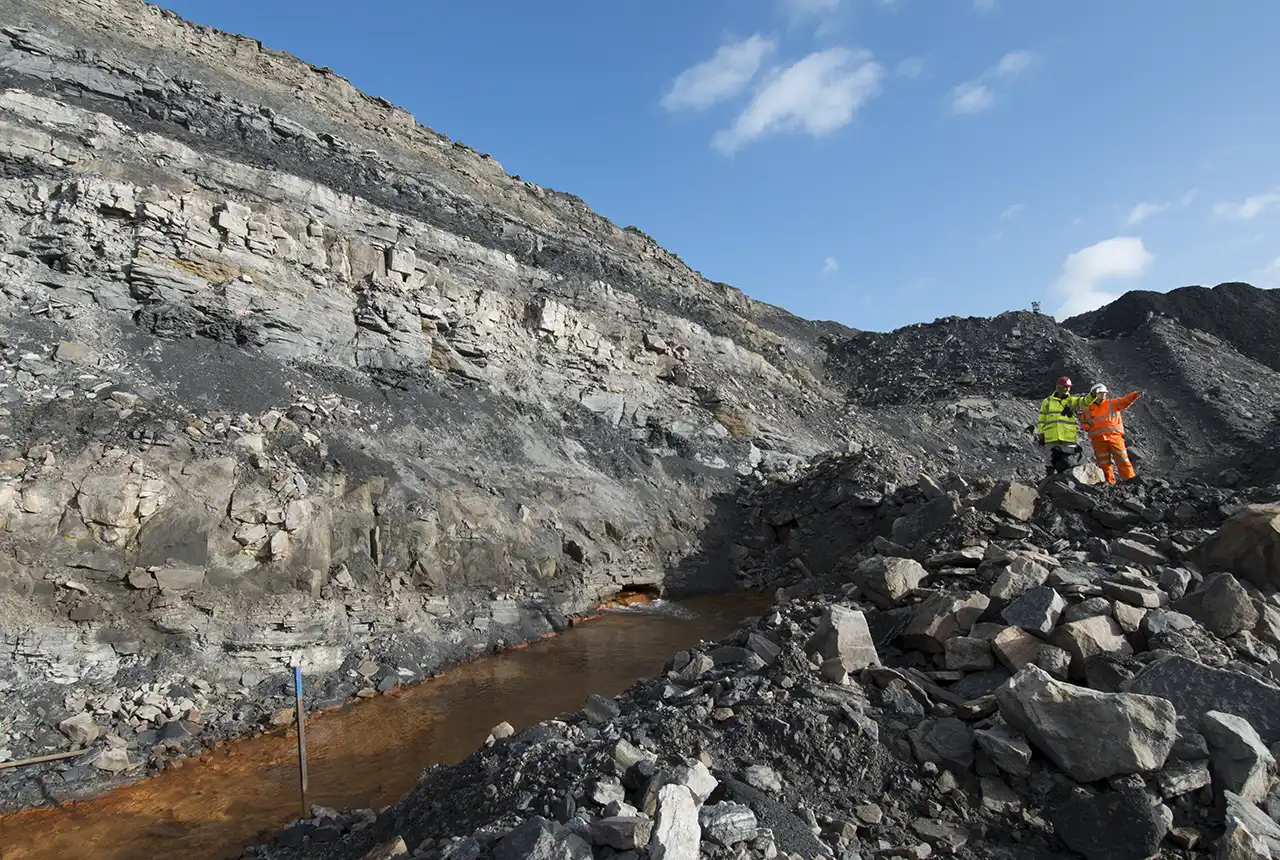The term ‘construction minerals’ is used to describe all minerals used by the construction industry, for example in road making, concrete and house construction and as railway ballast. The largest component of construction minerals and the most voluminous materials extracted from the UK landmass are ‘aggregates’: granular or particulate material that is suitable for use on its own or with a binder such as cement, lime or bitumen (in construction).
Aggregates are used in concrete, mortar, roadstone or asphalt (drainage courses), or for constructional fill and railway ballast. The two principal types of natural aggregate are crushed rock (limestone, igneous rock and sandstone) and sand and gravel. In addition to land-won sand and gravel, significant quantities are produced by marine dredging. Other minerals used in the construction industry are: clay, chalk, limestone, dolomite, brick clay, gypsum, slate and building stone.
‘Primary aggregate’ is the term used for aggregate produced from naturally occurring mineral deposits and used for the first time. ‘Secondary aggregate’ describes material that originates as a waste product from other quarrying activities, such as china clay or slate extraction, or is a by-product of certain industrial processes, such as blast furnace slag or power station ash. Recycled aggregate, consisting of construction and demolition waste, road planings and rail ballast, is an increasingly important source of aggregates.
Research on construction aggregates in England
The management of aggregates supply in support of construction activity in England has been an important part of minerals planning policy and practice for the past 30 years. To assess whether such intervention is still necessary to ensure adequate and steady supply of construction aggregates, and to evaluate possible future options, a series of five research projects was carried out in 2007 and 2008 for the Mineral Industry Research Organisation (MIRO) and the Department for Communities and Local Government (DCLG; now the Ministry of Housing, Communities and Local Government).
- Managing aggregates supply in England: a review of the current system and future options
This report, prepared by BGS in conjunction with a team of leading consultants under the DCLG-BGS Joint Minerals Information Programme, is an in-depth examination of the national managed aggregates supply system in England. The study assesses the strengths and weaknesses of the current system, as well as analysing the costs associated with its operation. It also compares existing practice with some alternative approaches and concludes with a series of recommendations aimed at improving the current system. - The need for indigenous aggregates production in England
This report by BGS in partnership with the Centre for Economics and Business Research details the economic contribution that indigenously produced primary aggregates make to the English economy. The report sets this contribution against estimates for the environmental costs of this production. It also makes a critical examination of the case for significantly increasing imports of primary aggregates from outside England. This research was funded by the Defra Aggregates Levy Sustainability Fund administered by MIRO. - Aggregate resource alternatives: Options for future aggregate minerals supply in England
This report, funded by the Defra Aggregates Levy Sustainability Fund administered by MIRO, examines the current situation regarding primary aggregate supply from designated areas such as national parks and areas of outstanding natural beauty (AONBs). It also looks at the extent to which possible alternative supply options for aggregates would be able to sustain a steady and adequate supply of aggregates in the future should additional resources located within national parks and AONBs become unavailable. This report is accompanied by maps of the English regions that show the extent of aggregate resources located outside national parks, AONBs and selected other national and international designations. Research partners on this project were BGS and Green Balance Planning and Environmental Consultants. - Reasons for the decline in aggregate reserves in England
This report, by Capita Symonds Ltd, was also funded by the Defra Aggregates Levy Sustainability Fund administered by MIRO. It examines the nature and significance of the reported decline in permitted reserves of primary aggregates, and the reasons behind those changes. The study also analyses the long-term implications for future aggregates supply and provides a series of recommendations for a planning response to stabilise or reverse this decline in reserves.
Overview of the management of aggregates supply in England
BGS has published an overview report, ‘Aggregates supply in England: Issues for planning‘, on the management of aggregates supply in England, prepared by an independent consultant under the previous DCLG-BGS Joint Minerals Information Programme. The overview summarises the main findings of the report ‘Managing aggregates supply in England: a review of the current system and future options’. It also draws on essential messages from the four other reports in the series, which examined:
- the present-day relevance of the 1976 Verney Report
- the need for aggregates supplied from indigenous sources
- recent trends in and the present state of reserves of aggregates with planning permission in England and the reasons behind those trends
- the possible alternatives to current indigenous sources of supply
You may also be interested in

Industrial minerals planning
Industrial minerals are vital to a modern economy: they underpin manufacturing industry, construction and agriculture and have important environmental applications.

Legislation and policy
Most forms of development in the UK, including mineral extraction and related activities, require planning permission before development can take place.

Mineral planning factsheets
BGS has produced a series of mineral planning factsheets covering economically important minerals that are extracted in Britain.

UK mineral ownership
Information about state and private ownership of minerals in the UK





